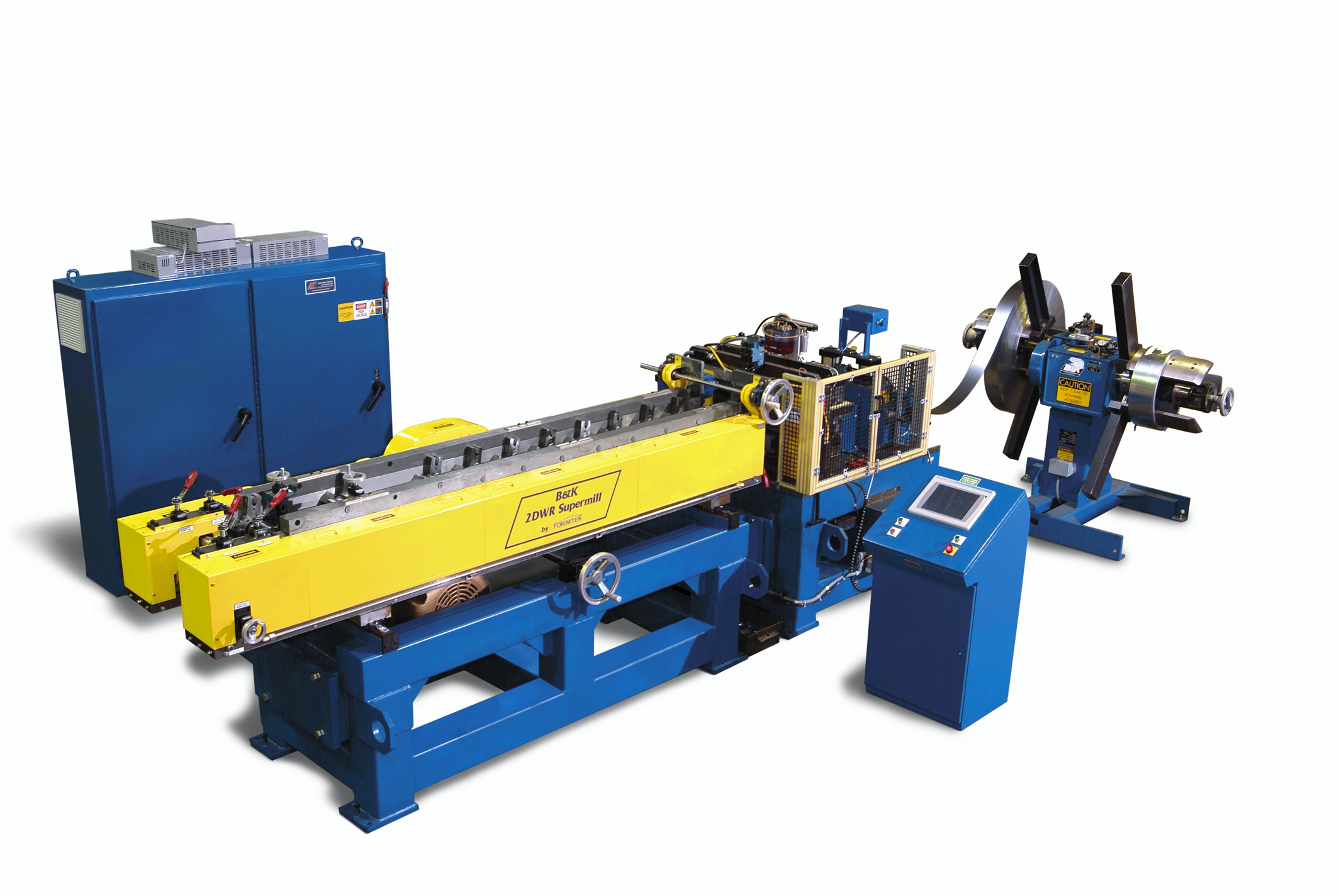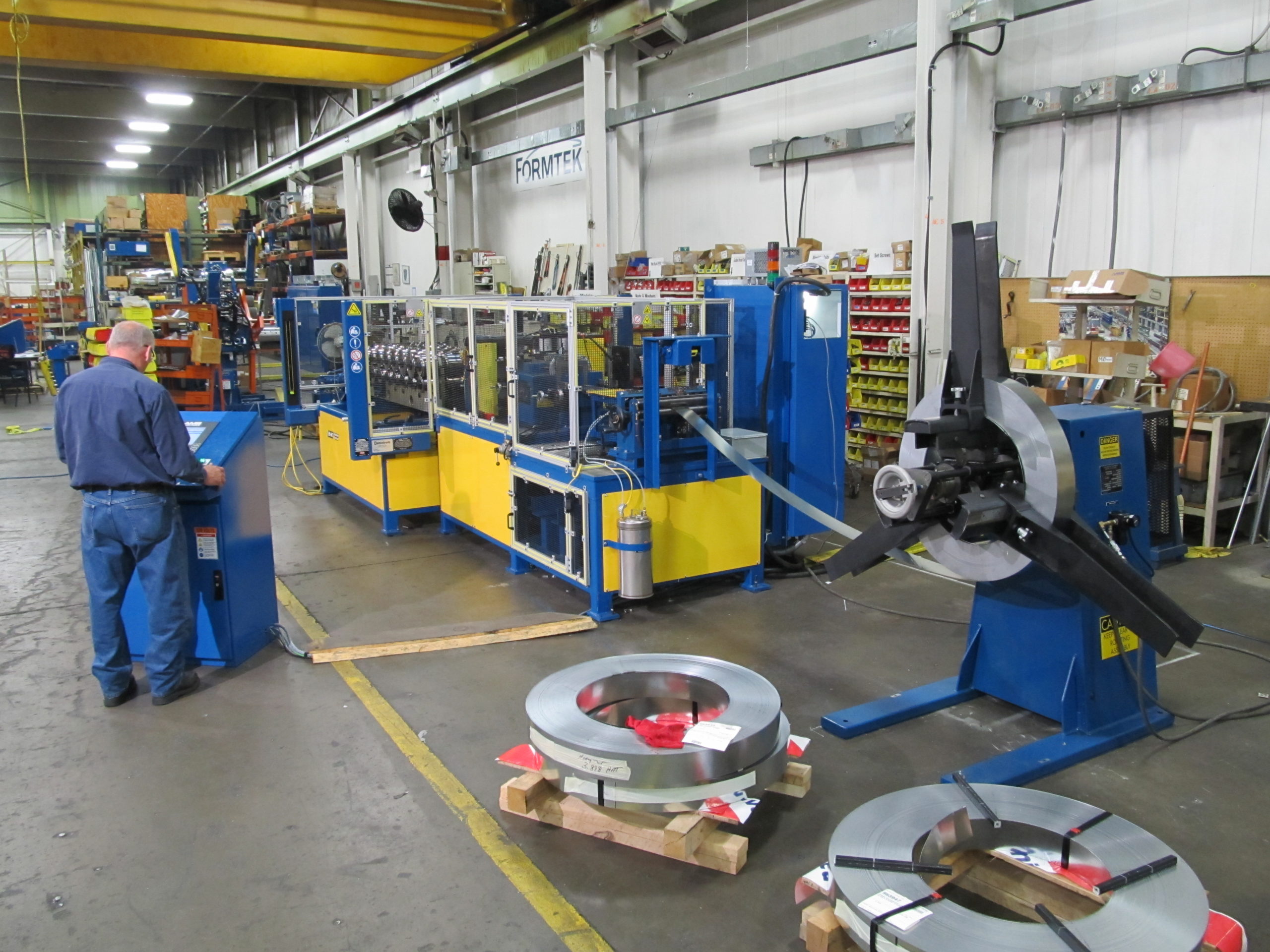Today’s construction market continues to be a gruelingly tough and competitive industry. No longer is it the typical 8am to 5pm workday of the 90’s. With today’s global economy and around the clock social media, the workday has become a virtual 24/7 event. On top of that, you have to be an expert in your field of work, an expert in meeting and exceeding your customer’s needs and always two to ten steps ahead of your competitor. You need to partner with the best but yet always have a “plan B” within reach.
 Within this industry are manufacturers of light gauge steel framing. This market is rapidly growing on a worldwide basis. That is awesome news if you produce steel framing. However it is a highly competitive market and process of “roll forming metal”, which is the largest user of coiled steel in the world today, plays a key role in flexibility, productivity and quality of the finished item.
Within this industry are manufacturers of light gauge steel framing. This market is rapidly growing on a worldwide basis. That is awesome news if you produce steel framing. However it is a highly competitive market and process of “roll forming metal”, which is the largest user of coiled steel in the world today, plays a key role in flexibility, productivity and quality of the finished item.
Roll forming can simply be described as taking a piece of sheet metal and forming it into a customized curved shaped product by processing it through an engineered machine featuring a series of rollers. However, the historical technology of this industry is simply not that simple. It typically takes a skilled machinist, with years of experience to operate and change over roll forming equipment.
The advantages of roll forming are widely accepted. The typical process is fast paced and some of today’s equipment can deliver over 500 feet per minute and utilize correspondingly higher rates of speed. This type of specialized roll forming equipment provides consistent and uniform parts – when equipment is properly set for a certain gauge thickness and width, the roll forming process will routinely form the material within a specified tolerance range.
A limited number of today’s roll forming machine manufacturers provide additional integrated processes to increase and improve line productivity. Punching, cut-off, slitting embossing, lancing welding, part marking stitching, wing bending, stacking and bundling are just some of the operations that can be assimilated into certain modern roll forming lines. Computer driven microprocessor controls conveniently simplify the operation of these highly complex line configurations.
While these new advances are extremely appreciated and welcome, some of the most basic hindrances to higher productivity have just recently been addressed and overcome.
Some of the most obvious and counter-productive pitfalls to a seamless and smooth metal processing operation can be broken down into the following categories of machine processes:
Equipment Set-up
This typically is a time consuming and tedious operation.
- Roll tooling and spacers must be placed on spindles, one station at a time by following intricate guidelines of set up charts and mechanical drawings of the tooling requirements.
- The clearance between rolls is designated on both the inboard and outboard sides of each station. Feeler gauges and adjustment screws with pointers and scales are used to make final adjustments.
- Once the roll machine is assembled, then “test runs” of material are sent through and then measured for dimensional accuracy. Routinely, adjustments will need to be made incurring costly downtime.

Adjusting for variation in material
After the equipment set-up has been re-checked and validated, the focus is now on the sheet metal to be formed. Modifications in materials often occur due to several reasons.
- Alteration of material thickness from coil to coil – even the most minimal change in material thickness can affect the setting and tooling clearance on most of the forming stations, requiring time consuming resets.
- The physical properties of the material yield, tensile, hardness often vary significantly .This will cause subsequent adjustment to the over-bend stations, critical forming stations as well as the part straightening fixture.
Product changeover
Changes in product processing typically account for the most downtime in roll-forming.
- A basic equipment changeover can take up to an 8 hour work day to complete – this time includes when the tooling set must be completely removed, replaced and the entire machine reset.
Operator inexperience
Lack of an experienced operator remains a key challenge for most roll forming operations.
- Since formal training in equipment set-up, process adjustment and changeover of roll formers is generally lacking in the industry, these tasks are typically observed and learned through on-the-job training. This can be a costly, long term trial and error period with resulting poor work practices and poor product quality.
- Equipment set-up training is critical to roll forming because it eliminates improper mechanical staging, mitigates the tendency for scrap, lost production time and ultimately damage to the tooling and machine.
Look for Part 2 in this blog series; Recent Innovations in Roll Forming: Reduce Cost & Simplify Operations
To Learn More, download our white paper:
About the Author
B&K is a member of the Formtek Group. Formtek is a group of long-established companies, each with a well-known name and a history of providing innovative, reliable equipment to the metal forming and metal processing industries. As a single source provider, Formtek continues to supply its customers with the highest quality equipment, parts and service available in the industries it serves.




